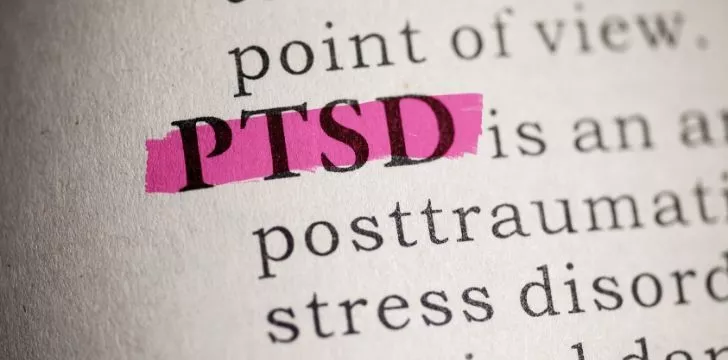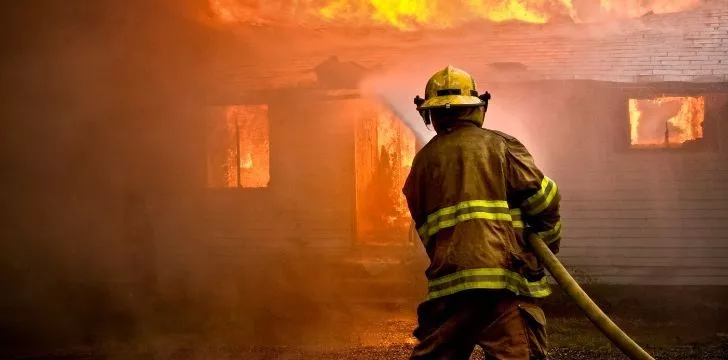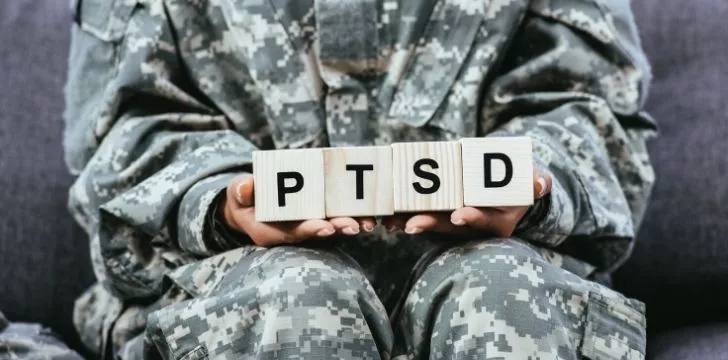PTSD stands for post-traumatic stress disorder and is a mental health problem that any of us could face at least once in our lifetime.
No one is immune to PTSD, but there are many ways to help and manage symptoms.
Here are 8 revealing facts about PTSD.
There isn’t just one type of trauma that leads to PTSD.

There are 3 different types of trauma that could lead to PTSD; they are acute, chronic, and complex trauma.
Acute trauma is formed from a single traumatic event, such as an accident.
Chronic trauma develops from repeated or prolonged trauma like domestic abuse.
Complex trauma is when a person is exposed to many forms of traumatic events.
There are 17 signs of PTSD.

A person could be diagnosed with PTSD if certain symptoms continue for longer than 1 month after a traumatic event.
Not everyone will experience the same symptoms or even all 17 of them, but these are the most common and will help a doctor with a diagnosis.
The 17 symptoms are broken down into 5 categories:
Stressor
Stressor symptoms represent the event that could have led to a person developing PTSD. This could be witnessing trauma, direct exposure to trauma, learning that someone close to you has experienced trauma, and exposure to traumatic events through work.
Intrusion
Intrusion symptoms are the act of re-experiencing trauma. This could be in the form of flashbacks, nightmares, distressing memories or triggers.
Changes to mood & thoughts
After a traumatic event, you might experience changes in mood and thoughts, which could come in the form of blaming yourself for the trauma, difficulty feeling positive, feeling isolated, struggles to remember the traumatic event clearly, and overall negative feelings about yourself and the world.
Avoidance
Avoidance, these symptoms are when the person affected tries to avoid remembering the event, talking about what happened and how they are feeling.
Changes in reactivity
And finally any signs of changes in reactivity. This could be represented in heightened emotions, difficulty sleeping and concentrating, engaging in destructive behavior and hyper-awareness.
7-37% of firefighters will develop PTSD.

It might seem surprising that such a high number of firefighters develop PTSD, but their jobs can be traumatic.
With a firefighting career, you are very likely to witness at least one traumatic event, sometimes multiple.
This puts firefighters in a high-risk category of developing PTSD as it is more likely to be developed if multiple traumatic events occur.
A survey asked firefighters with PTSD which events had traumatized them most and a common response was events involving helping children and scenes where victims were dead at the scene from non-natural causes.
Additionally, car accidents were said to be some of the most traumatic scenes for firefighters to work with.
9.2% of Canadians suffer from PTSD.

Canada has the highest diagnosed cases of PTSD in a study of 24 countries, alongside the United States, Australia, and the Netherlands.
Studies show that richer countries and areas are more likely to suffer from PTSD as their expectations for things such as safety are higher and therefore when a traumatic event happens it is more difficult to come to terms with.
Nigeria, China, and Romania had the lowest number of diagnosed cases of PTSD.
Children as young as 6 years old can develop PTSD.

You may think that PTSD is a mental health issue that only adults or perhaps teens can develop but children can develop it too.
Studies show that PTSD can be diagnosed in children from 6 years old and sometimes even younger if they have directly experienced a traumatic event such as near-death, serious injury or sexual violation.
Similar symptoms to adults are looked for in children in order to diagnose the disorder but there are different treatments offered to children.
The most common form of treatment is psychotherapy as it will teach the child how to identify their emotions and feelings towards an event, managing their fear as well as developing coping mechanisms.
10% of women in the US will develop PTSD.

Women are more likely to experience PTSD than men according to studies found in the US.
Studies show that there is over double the number of women diagnosed with PTSD each year than men.
Only 4% of the male population is diagnosed with PTSD.
Sexual assault is one of the most common traumatic experiences that can lead to PTSD and this is generally experienced by more women than men.
You can still develop PTSD even if you haven’t directly experienced trauma.

In most cases PTSD is developed after witnessing or being part of a traumatic event, but it can be developed in other ways too.
It is less common, but possible to develop PTSD if you are repeatedly exposed to graphic details of a traumatic event.
This occurs often with people who work within the police, as journalists or first responders.
These jobs require investigating in detail a crime scene which could have been the result of a traumatic event, and therefore the exposure to such information can make someone develop PTSD.
This can also occur if you find out about a close relative or friend who has experienced a traumatic event. This is because as we feel for that person, which can affect our own mental health.
It can take years after a traumatic event for you to develop and show symptoms of PTSD.

Everyone reacts differently after a traumatic event and this is widely affected by your surroundings.
It is possible for you to have a supportive network around you after a traumatic event and you show no signs of PTSD.
But there can be triggers that bring up the past and traumatic events which then could lead you to develop PTSD.
A study on New Yorkers was carried out following 9/11 and some victims didn’t experience symptoms of PTSD until 2 years after the event.
PTSD is a recognized mental health condition and with the right diagnosis and correct treatment can be managed.
Anyone can develop PTSD at any point in their life, so why not check up on a friend or family member as they might be going through something they are struggling to understand.


















